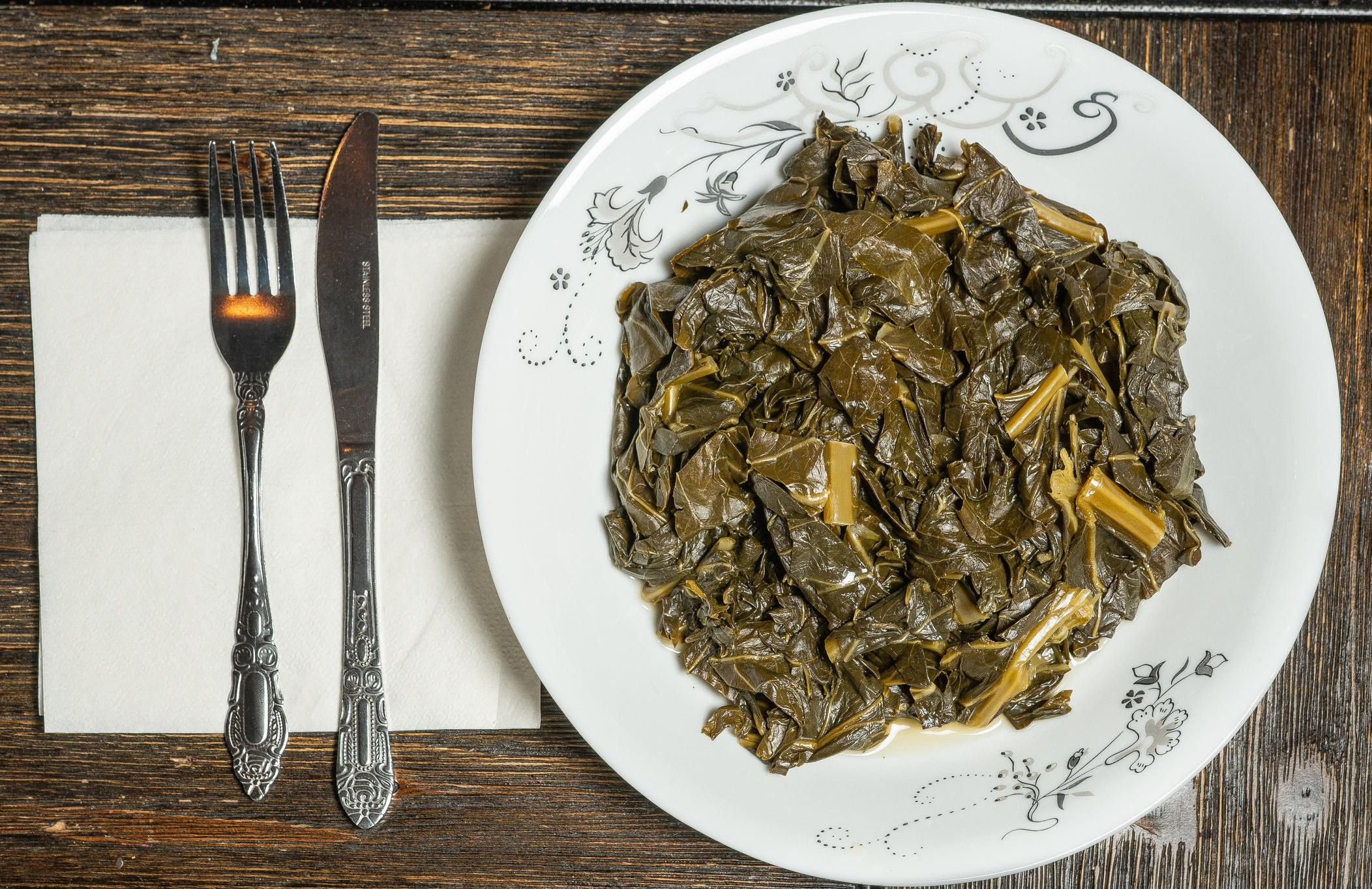Collard Greens: A Different Kind Of Root Vegetable
Greens can be traced back centuries throughout the African Diaspora
Welcome to Flavor & Soul: A Brief History of African American Food. We'll be taking a closer look at one dish each week and tracing its roots within the African American cooking tradition.
For every important celebration throughout the African American diaspora, there will be greens. Doesn't matter if it's Christmas, graduation, or Juneteenth—if it calls for a family gathering, the appearance of a big pot of leafy greens is crucial. In fact, it's typically the only green vegetable besides okra that wins a major place on the table. Raw greens or salads aren't so common; Mixed-ish TV writer and co-executive producer Angela Nissel brilliantly summed up greens as "Black people's hot salad," and that's exactly what it is. They can be collards, turnips, mustards, and sometimes even dandelion, but whatever they are, they will be served hot, seasoned, and delicious.
Even though they were dished up constantly, I didn't start out loving greens as a kid. Actually, I didn't like to eat anything green (it's still my least favorite color). But unlike green beans, spinach, or lima beans, I sensed that there was a special status attached to greens. There was a detailed process of picking, cleaning, and cutting the leaves, and I would watch wizened brown hands perform the task lovingly. A heaping pot would be cooked and shrink down into a few bowls of greens that would be seasoned with salt pork and spices. It almost resembled a sacred ritual.
I remember that my great grandmother would get so happy if I took a forkful of greens, she would beam as if I had somehow uplifted the whole family line. One time, I got so pleased to see her face light up that I kept asking for more greens and dumped them behind the radiator. The pungent smell of old greens is not something you can hide and she was not so happy when she found them. But that memory makes me think about what was so special about greens that made me want to pretend to enjoy them.
It turns out that the growing, cooking, and eating of greens is a tradition that spans centuries and continents. Collard greens originated in Greece, but the way green leafy vegetables are prepared throughout the African diaspora is a specific process that has not really changed that much since ancient times. According to culinary historian Michael Twitty, gathering greens (whether from the wild, gardens, or trees) and stewing them down into a seasoned sauce was a widespread practice for centuries on the African continent and it continues today. One of my favorite dishes that I discovered when I traveled to Ghana was kontomire stew, also called palaver sauce, which is made from cocoyam leaves. The dark green leaves resembled and tasted like tender mustard greens and except for the melon seeds added to the dish, it could have easily passed for my great-grandmother's greens. Instead of the cornbread that we use to soak up the juice or pot liquor, balls of banku or fermented cassava and corn dough is used to scoop up the savory greens. In Nigeria, egusi stew is a similar dish, usually made with pumpkin leaves or bitter leaf, and in the Caribbean, callaloo is a staple made from taro or dasheen leaves. The type of greens are determined by the climate and terrain, but the preparation remains constant, whether you are in Chicago or Sierra Leone. No wonder greens are so important to the Black food tradition: they have been a familiar friend wherever we have landed.
I eventually grew to love greens by the time I was about 10. Now I eat all varieties, even kale, but my favorites are turnip greens, which have a less bitter, more complex taste than collards or mustards. I pick up bunches from my independent grocer and boil them down, seasoned with smoked turkey. I make hot water cornbread and savor the slightly piquant flavor of the greens, just like my great-grandmother and generations of ancestors before her. Greens might not qualify as a root vegetable, but they definitely highlight the long roots of the African diaspora's culinary heritage.
